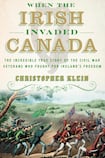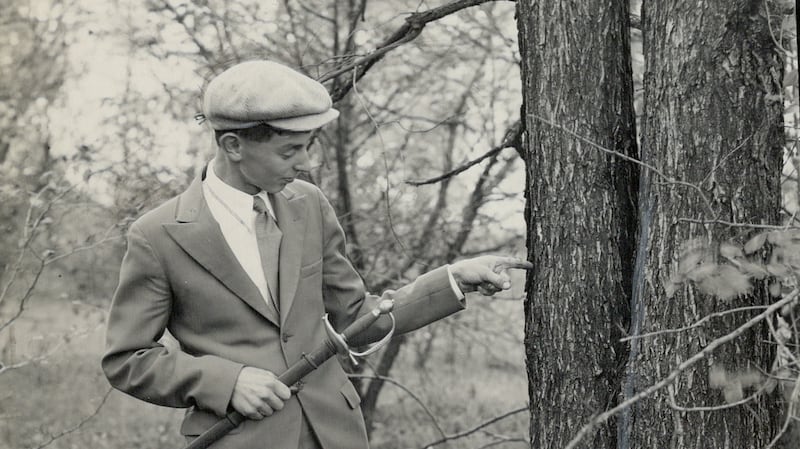
The idea sounds as implausible and foolhardy today as it did more than 150 years ago. Assemble a small army of Irish men at the northern border of the US, conquer Britain’s neighbouring Canadian colonies, then swap them for the real prize – the independence of their long-suffering homeland. The British government, unable to defend its vast North American possessions and fearful of antagonising an already hostile American government, would quickly capitulate – or so the invaders assumed. Centuries of oppression and misrule would end, almost overnight. Ireland, at last, would be free.
What could possibly go wrong? Even a former US president, Thomas Jefferson, had once declared that the capture of Canada was “a mere matter of marching”.
Yet plenty could go wrong – and did. In what American author and journalist Christopher Klein describes as “one of the most fantastical missions in military history,” the Fenian Brotherhood – the American wing of the 19th-century Irish independence movement – set out to seize Canada, then hold it for ransom until the British relinquished Ireland. Fenians launched five quixotic cross-border raids between 1866 and 1871, “a series of incursions,” Klein writes, “that eventually devolved into a mix of farce and tragedy”.

The Irish men who took up arms against Canada were drawn from a generation that escaped the horrors of the Famine, only to be immersed in America’s bloody civil war. Thousands of Irish-Americans joined the fight between the Union and the Confederacy, many with an ulterior motive. As one Kilkenny-born recruit confessed, his goal was to “learn the soldier trade in the hope that the knowledge we acquired might, in the future, be of service to the old land”.
The future arrived in 1866, barely a year after the civil war ended. Unable to attack the British in Ireland, the Fenians settled on a target close at hand – the British territory to the north. “Wherever the English flag and English soldiers are found,” one Fenian commander reasoned, “Irish men have a right to attack.”
Thousands of Irish veterans heeded the call to crash the Canadian border. Even Queen Victoria, convinced of “the impossibility of our being able to hold Canada”, feared her lightly defended North American possessions would be overrun.
After an aborted scheme to seize a British island off the coast of Maine, the Fenians regrouped in Buffalo. More than a thousand crossed into present-day Ontario and, on June 2nd, 1866, battled a larger force of British regulars and Canadian militiamen at the village of Ridgeway. At least 16 combatants died, including a half-dozen Fenians, before the defenders were sent packing.
It was, Klein notes, the first time an Irish army had beaten the British in more than a century. But there was little time to celebrate. Short on supplies and reinforcements, the Fenians returned to the US within days and were promptly arrested for violating American neutrality laws. Four years later, a fresh wave of Fenians marched north, their sights set on capturing Montreal; they barely made it over the Quebec border before beating a hasty retreat.
Klein has burrowed deep into the historical record and his vivid, engrossing storytelling brings to life the raids as well as the eccentric characters behind them, from “Fightin’ Tom” Sweeny, the one-armed former Union general who served as Fenian secretary of war, to the courageous but reckless Col John O’Neill, architect of both the victory at Ridgeway and the humiliating defeat on the road to Montreal.
The “kidnap Canada” plan was doomed from the start. Klein shows how poor planning, internal squabbles and a crafty British spy undermined the Fenians’ plans. Political self-interest also played a role – Washington, desperate to avoid being drawn into a war with Britain, helped by deterring and disarming the would-be invaders. But bravado and loose lips were bigger enemies. Plots and attack plans sometimes made headlines before any action could be taken. “No news travels so freely or so fast,” Mark Twain quipped, “as the ‘secret’ doings of the Fenian Brotherhood.”
There’s an ironic epilogue to the story. The Battle of Ridgeway and the threat of more Fenian incursions to come rattled the inhabitants of Britain’s northern colonies, hastening their unification in 1867 to form Canada – a new country better able to defend itself. Decades later this self-governing “dominion” within the British empire would become a model for Ireland’s long-sought transition to Home Rule.
“The Fenian raids would prove instrumental in the creation of a new nation,” Klein notes, “just not the one that Irish men intended.”
Dean Jobb, author of Empire of Deception, the true story of a master swindler at work in 1920s Chicago, teaches non-fiction writing at the University of King’s College in Halifax, Nova Scotia.















